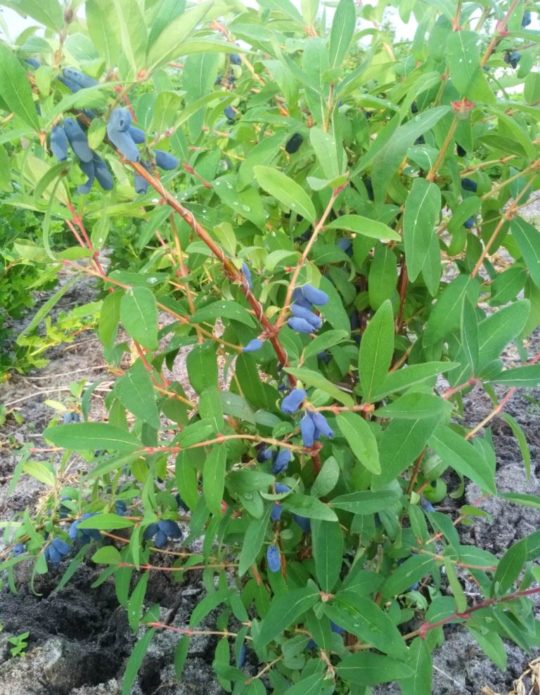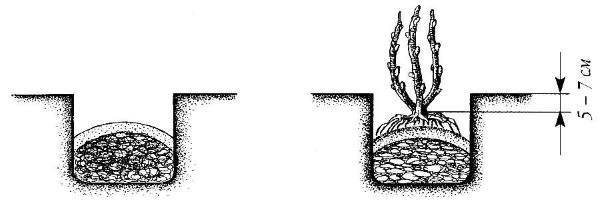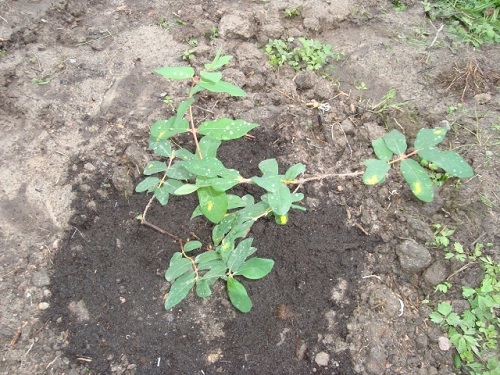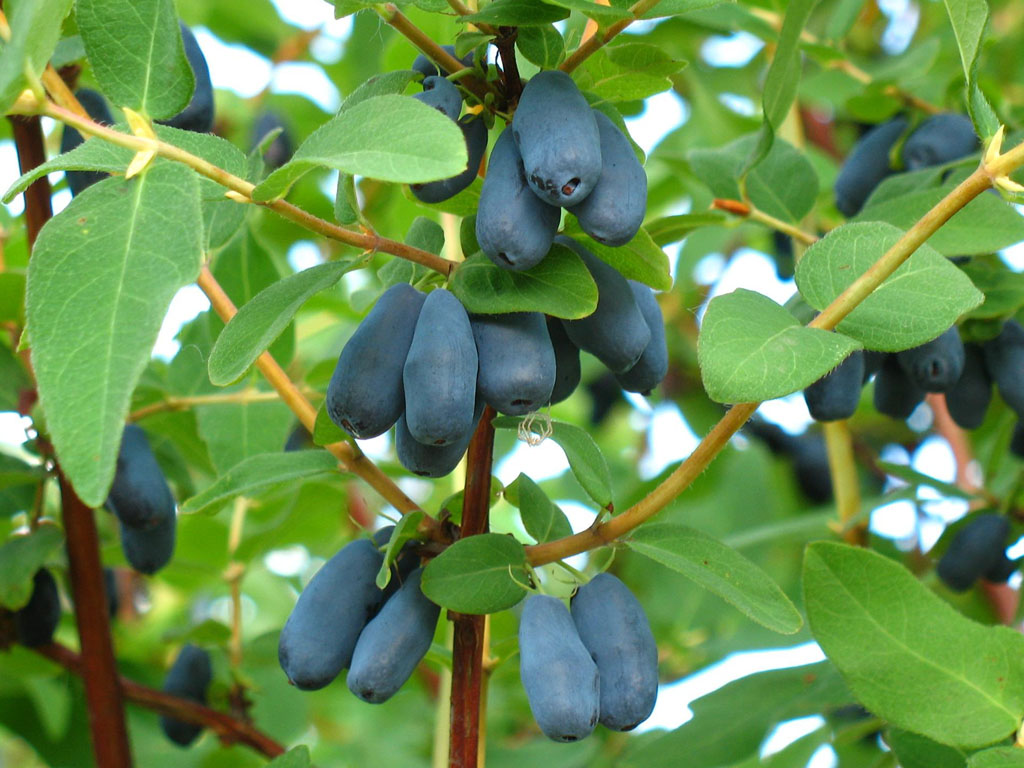Honeysuckle has settled in amateur gardens quite recently: back in the 1980s. it was considered a forest berry. But now its popularity is growing rapidly, new varieties appear, differing both in the taste of berries and in other characteristics of the plant. Amphora honeysuckle is rightfully considered one of the best, although no longer young varieties.
Content
History of breeding, description and characteristics of Amphora honeysuckle
The first entries in the section “honeysuckle varieties” of the State Register of Breeding Achievements of the Russian Federation appeared only 10–12 years before the end of the last millennium. At first these were isolated examples, and the variety Amphora, registered in 1998, was among the first. Like the vast majority of other varieties, Amphora is officially recommended for cultivation throughout Russia.
Although, of course, it is difficult to talk about the entire territory: honeysuckle does not grow well everywhere. She does not like very hot and dry climates. This variety, which was obtained in the city of Pavlovsk near St. Petersburg at the VIR experimental station, is no exception. The selection was carried out on the basis of Roxan's honeysuckle and wild Kamchatka shrubs. The authors of the variety are M.N. Plekhanova, A.V. Kondrikova and K.F. Efimova.
Amphora grows in the form of a medium-sized bush up to 1.5 m high with a sparse rounded crown. Shoots are smooth, straight, light green in color with an anthocyanin tint, grow upward with a slight slope. Leaves are green, oval, large, slightly pubescent. The flowers are yellow-green, shaped like a bell. Since the bush is beautiful in itself, Amphora is also used in garden design.
The first normal harvest gives in the third year after planting, but several berries may appear the next summer. The variety is considered to be medium late, harvesting in late mid-June. Urgent picking of berries is not required, they hang firmly on the branches for a long time, without crumbling at all: in calm weather up to two weeks.
Berries up to 20 mm long, mostly weighing slightly more than 1 g, the largest reaching 3 g. The shape is regular jug-shaped, really resembling an amphora, at the top there is an even ridge. The color of the berries is bluish-blue, common for most varieties, the waxy coating on them is strongly pronounced. The skin is of medium density, the taste of a very dense pulp is sweet and sour with a mild bitterness. There is practically no aroma. The taste assessment by tasters is 4.6; a dessert type of berry with a lingonberry aftertaste is noted.
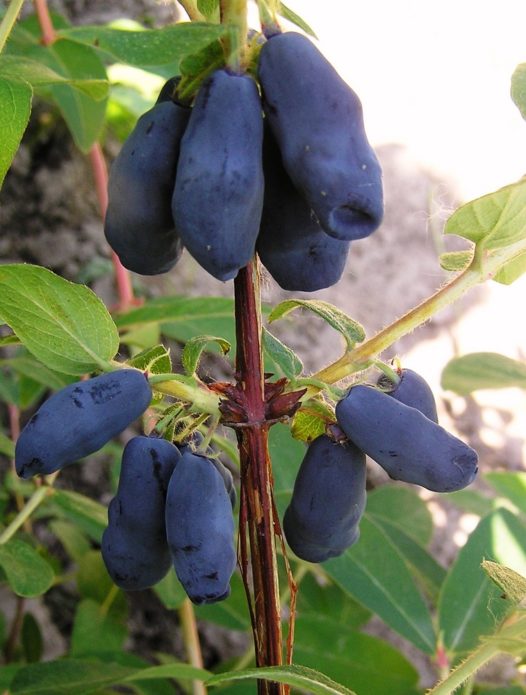
Of course, not every berry has the correct shape, but basically they really do resemble ancient Greek vessels.
The purpose of the crop is universal, transportability is good. The variety is considered ideal for the preparation of various culinary products, preparations for the winter in the form of juices, compotes, jam. The average yield per bush is 1.5–2 kg, with industrial cultivation of the crop - 19.4 kg / ha.
The variety has high frost resistance: the buds are able to withstand temperatures down to -45-47 aboutC, the plant is weakly affected by aphids.Amphora is not afraid of returnable spring frosts, since the flowers also take a hit well up to -7 aboutC. The variety is self-fertile and requires pollinators. The best are Nymph, Morena, Gzhelka, Altair.
Features of planting and cultivation of Amphora honeysuckle, including the Moscow region
Honeysuckle is a long-lived shrub, but most varieties, including Amphora, are good because their transplantation, if necessary, is possible and not problematic at any age. Although, of course, it is better to immediately plant the purchased seedling in a pre-planned place and according to the rules.
Landing
Honeysuckle grows normally both in the shade and in the sun, but in well-lit areas, the yield is much higher. As for the action of the winds, they practically do not affect the viability of the plant, but they can break off delicate shoots, so the presence of a fence not far from the bush from the side of the prevailing winds will come in handy. Neighbors such as a lilac or jasmine bush are also suitable.
Honeysuckle grows on any soil, but they should be well fertilized with organic matter, neutral or slightly acidic. She needs constant moderate humidity without stagnant water. Therefore, despite the fact that honeysuckle loves low places where the winds are weaker, you must pay attention to the fact that they are not swampy.
You can plant Amphora at any time, except in May and June, when there is an intensive growth of shoots. But it is better to do this, even with a closed root system, before the spring budding, and the best time is autumn, after the growth stops, but long before the onset of frost. Autumn planting is especially welcome if you get a seedling with bare roots.
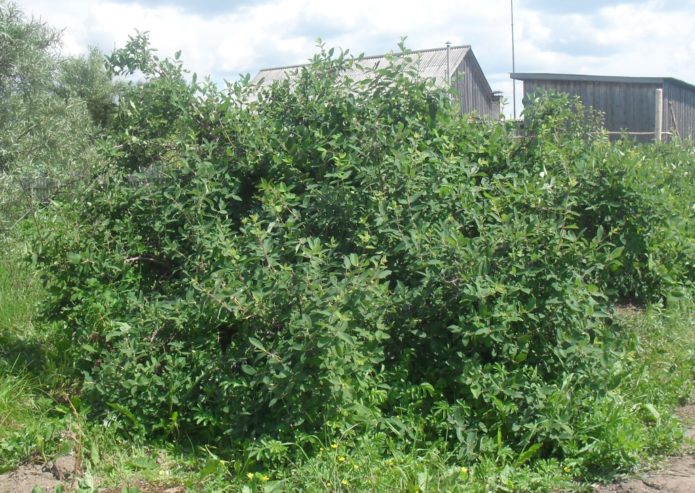
When deciding to plant honeysuckle, you need to understand that it feels best and bears fruit when many bushes are planted at once
In most climates, the planting deadline is mid to late October. In the Moscow region, the optimal time is from mid-September to mid-October. 2-3-year-old seedlings of Amphora honeysuckle are optimal for planting.
Since Amphora cannot bear fruit alone, it will need pollinators. This means that it is necessary to correctly arrange the bushes on the site: there will be at least two of them. The distance between adjacent bushes should allow you to freely wade between them without breaking branches. This is at least one and a half meters. If many bushes are planted, 2.5–3 m are left between the rows: after all, the bushes will grow for 20 years or more.
Planting Amphora honeysuckle is carried out in a similar way to planting most fruit shrubs: in a hole filled with fertile soil. It is advisable to pre-dig the entire area, removing the rhizomes of perennial weeds and slightly fertilizing the soil with humus. The main fertilizers are placed in the planting pit: one and a half buckets of humus, a couple of handfuls of ash, 100 g of superphosphate. The dimensions of the pit are 40 x 40 x 40 cm, in the case of clay soils, a little more in order to place drainage from broken bricks or rubble on the bottom.
If the seedlings are without a clod of earth, the work plan is as follows.
- Planting holes are prepared a week before planting. Neighboring holes are dug no closer than 1.5 from each other. Drainage is placed at the bottom of each pit, then fertile soil, well mixed with the necessary fertilizers. Pour 2-3 buckets of water into the pit.
- Immediately before planting, a hole is made in the center of the hole so that the root system can fit in it. A seedling is placed in the hole, adjusting the height so that the root collar is at the level of the soil: after planting is completed, it will go deep into the required distance, about 5 cm.
- Carefully spreading the roots of the seedling along the hole, cover them with fertile soil removed from the hole. Water the seedling, spending 5-10 liters of water for this.
- After the irrigation water has been absorbed, a roller is made along the edges of the hole and the soil is mulched with peat, humus or any similar bulk material.
- Shoots are not cut in autumn, and in spring all branches are shortened a little, leaving no more than 20-25 cm.
If a seedling with a closed root system, everything is much simpler. You just need to try so that when you remove it from the container, the earth does not crumble; the roots sticking out of the coma are not cut off. And the main thing: in this case, the root collar is left in the same position as it was in the container, without additional deepening.
Video: planting Amphora honeysuckle
Care
After the autumn planting, Amphora overwinters easily, but for the first winter you can slightly spud the bush and even cover it with coniferous needles. In early spring, the shelter is removed and the soil is shallowly loosened. In the first year, watering should be regular, in subsequent years it is carried out depending on the weather. The soil should be moist at all times, but not sticky.
Loose soil under honeysuckle, as well as its moderate moisture, is a guarantee of long-term stable yields.
Top dressing is applied starting from the 3rd year. From early spring, Amphora will need nitrogen, which is best given in the form of organic fertilizers: good humus or compost. A bucket of organics is scattered around each bush and shallowly sealed with a shovel or hoe, depending on the moisture and looseness of the soil. By the end of summer, a couple of glasses of wood ash are introduced in the same way. Mineral fertilizers are used only in the absence of natural ones; they can also be used for foliar feeding.
For the first few years, it is not necessary to approach the bush with a pruner; only severely damaged shoots can be removed. In an older age, the bush can already grow so much that individual branches will interfere with each other. There are no specific rules for pruning honeysuckle: cut out what is clearly superfluous. It is best to do this in September or October.
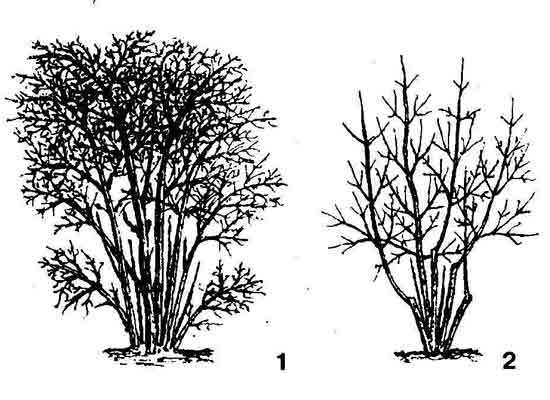
The pruning scheme can be drawn simply: the main task is to lighten the bush, remove the oldest shoots
After 7–8 years, 1-3 of the oldest non-fruiting shoots, inconveniently located, are necessarily removed annually: the most valuable are 3-5-year-old shoots. Old bushes (after 15 years), if they are supposed to be left in place, rejuvenate radically: more than half of the thick shoots are cut out and the bush is well fed.
Most varieties of honeysuckle hardly get sick, and Amphora is no exception. The only thing to protect plants from is aphids, which are able to occupy young shoots and leaves. But, since the crop ripens early, chemical insecticides cannot be used in the fight against it.
Aphids are destroyed with biological products (Fitoverm, Biotlin) or folk remedies (infusions of onion peel, wormwood, celandine, etc.).
The region near Moscow is the best suited for the weather conditions for growing honeysuckle, including the Amphora variety: among a dozen others, this is one of the most popular varieties in the Moscow region. The climate of the middle zone is favorable for this culture: there is no excessive heat, the amount of precipitation is often enough to almost stop watering, and Amphora tolerates frosts perfectly.
The only thing that the Moscow region climate is notorious for is the frequent alternation of frosty weather and unexpected thaws in winter. As a result of such a leapfrog, many fruit trees and shrubs run the risk of weeding out in winter. Therefore, it is undesirable to grow honeysuckle in low places, where melt water stagnates for a particularly long time.
Video: the first harvest of Amphora honeysuckle
Advantages and disadvantages of the variety in comparison with similar
In reviews of Amphora's honeysuckle, no particular flaws can be found. Is that self-fertility, requiring pollinators, but this applies to most varieties. But the variety has many advantages:
- large-fruited;
- great taste of berries;
- very high frost resistance, unpretentiousness to conditions;
- lack of secondary flowering;
- non-shattering of berries in a state of full maturity, transportability;
- early maturity.
Amphora is considered one of the best varieties of large-fruited honeysuckle. Non-shedding of berries after ripening is inherent in far from all varieties. In addition to Amphora, this can boast, for example, Morena (an early-ripening variety with a yield slightly lower than that of Amphora) or Malvina (a variety with mixed reviews: they often talk about excessive sourness in the taste of berries).
Among large-fruited varieties in berry size, Amphora is far from a record holder. Larger berries give, for example, the Bakcharian giant or Delight, they also have higher yields, but in terms of taste, most tasters do not put their berries above Amphora. Actually, the variety of varieties gives a choice to a novice gardener: after all, honeysuckle is still not a very frequent visitor to summer cottages.
Reviews
Amphora Large, but somehow empty. Sweet though.
I read somewhere that planting two different varieties in one hole, practically with one bush, gives a very good result. I did such an experiment: I planted Amphora, and then in the fall I bought another seedling (such as the Blue Spindle) and dug it next to Amphora. And I forgot ... And when the bushes grew, I was still amazed - that Amphora has long and thin berries on one side ... The yield of this Amphora was clearly higher than other honeysuckles.
Amphora and Nymph are very good, the berries are large and tasty, there is no talk of bitterness.
I consider the Amphora variety the best. I am satisfied with the berry.
Varieties with a slight bitterness, such as Amphora, are a good pollinator, which is important when there are few bushes of different varieties on the site. And at the same time, the preparation gives a lot of head start to delicious varieties to taste.
Honeysuckle Amphora is one of the best representatives of this culture, which is not very traditional for gardeners. Since its cultivation is not difficult, and the vitamin berries are ready in June, more and more summer residents of the middle lane are trying to plant a couple of bushes in their area. This can be done in the fall, and after a couple of years Amphora will give a good harvest.
